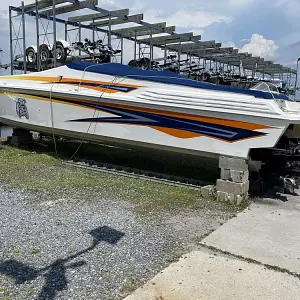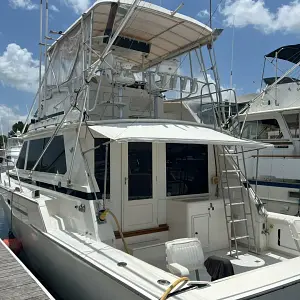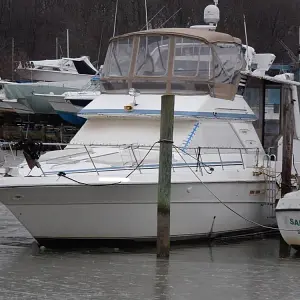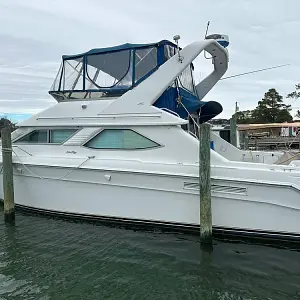It is the opinion of many that NIRVANA should be classed as one of the prettiest boats ever designed - as can be expected from the pen of artist with yacht design as a hobby, Albert Strange. Designed in 1915 - one of his longest canoe yawls - the First World War intervened and her exquisite lines weren't given life by Jack Tyrrell of Arklow until after Strange's death.It is the opinion of many that NIRVANA should be classed as one of the prettiest boats ever designed - as can be expected from the pen of artist with yacht design as a hobby, Albert Strange. Designed in 1915 - one of his longest canoe yawls - the First World War intervened and her exquisite lines weren't given life by Jack Tyrrell of Arklow until after Strange's death. Stout construction from Irish oak and American pitch pine, oak rather than iron and steel floors, and many lovers over almost a century have ensured NIRVANA's survival - helped in no little way by falling into the hands of Albert Strange aficionados, the Clays of Woodbridge. She was very well named from birth, and is a dream to own and sail - particularly well set up for sailing by a couple.
My love affair with this boat began in the late 80s; and I bought her in 1989. Then followed the extensive restoration by well respected East Coast boatbuilder Jamie Clay - detailed below. In my ownership of about 35 years NIRVANA has travelled a fair distance. The first trip was from the Clyde to Harwich prior to her restoration. After her restoration she proved a dry sea boat and we sailed to Holland, Germany, Denmark, Sweden and Norway. As a restored and well cared-for vessel she has been welcomed everywhere - especially amongst her classic contemporaries.
- Keel bolts replaced like-for-like in wrought iron - Garboards renewed in iroko - Hull re-caulked. - Rudder blade renewed - Rudder stock more recently replaced in stainless steel - with new epoxy/glass rudder tube and new bearings - Removal of the 1950s dog house - Cabin trunk disconnected and raised clear of deck - Replacement of all deck beams and carlins - New subdeck of 12 mm Bruynzeel marine plywood - New quarter sawn 9 mm laid teak deck covering - set in epoxy; sealed with Sikaflex (no screws or plugs) - New teak rail and capping laid - A clever deck/ covering board overlap ensured a totally dry deck - Extension of the cabin sides back to the cockpit coamings - Cockpit redesigned and replaced - (See Accommodation section for details of new interior) - Replacement of all spars except the main mast and bumpkin - Renewal of all rigging with double galvanized Danish steel - All rigging hand spliced, parcelled and served - New fore cabin and saloon skylights - New teak fore hatch - Replacement of the engine - All running rigging replaced
ALBERT STRANGE DESIGN NO.NIRVANA's design, predating her build by 10 years, was commissioned by London naval architect and ship owner/ broker Noël Constant. But there was a war on. Constant survived it, Albert Strange died naturally in 1917, and No. 144 - his largest canoe yawl design - remained unbuilt.Enter Howth, County Dublin dental surgeon A.W. 'Billy' Mooney, a very active member of Howth Yacht Club and avid sailor, until recently owner of the Howth 17 Class day racing cutter RITA, and desirous of extending the sailing horizons afforded by his converted RNLI lifeboat cruising ketch LIL. Perhaps also in celebration, or at least a refection of stability in Ireland following its turbulent early 20th Century years of the First World War, the War of Independence, and the Civil War, Mooney purchased the No. 144 drawings from Strange's widow, Julia, and Jack Tyrrell gave them form that winter at his family's industrious boatyard on the bank of the River Avoca, Arklow, County Wicklow. Tyrrell was only turning 20, and NIRVANA (as she would be launched) may have been the first Tyrrell yard build in his command, yet he was already highly experienced in the building and operation of the sailing coasters his family owned. 35-year-old Mooney was also experienced as a racer and cruiser of small yachts. He is believed to have been deeply involved in the specification and build. Mooney cruised NIRVANA extensively and successfully on the Irish and Scottish coasts between Valentia and Stornoway. His house names over the years reflect a particular love of sailing on the west coast of Scotland - 'Craigmore' (Isle of Bute); 'Colintraive' (Kyles of Bute); 'Ardfern' (Argyll) - but he was no stranger to home waters, especially the magical, Atlantic fringe West Cork anchorages reached so comfortably with NIRVANA. He became one of the founding members of the Irish Cruising Club during their first 1929 meet at Glengarriff. An ambitious and sometimes stormy 1932 family cruise to Cornwall and Devon won the Mooneys and NIRVANA the club's already prestigious Falkner Cup - judged by none other than Yachting Monthly editor Maurice Griffiths. To those who can't imagine sailing adventure without electronic guidance here's a wonderful description of a closer than wished for encounter with foggy Tuskar Rock from NIRVANA's 1932 log: “We could hear the five minute fog [signal] explosion on the Tuskar and wishing to see the rock if possible, as it is quite steep to on its northern side, steered straight for it. Unfortunately the navigation was too good, for in one of the intervals between the explosions the rock loomed up suddenly, apparently almost overhead and before my crew, who was steering could realise it, there was a jolt and there we were piled up. At that moment the gun went off directly overhead. I rushed up on deck, saw deep water on both sides of us and realised we had crossed the boat slip to the rock, and in a moment had the headsails down and soon NIRVANA glided off into deep water.” Mooney wrote that NIRVANA had been “such a success and so easy to handle by myself that I am seriously considering something larger of at least 16 tons, still single-hander.” In the event, a serious illness in 1933 forced the sale of NIRVANA, but afforded time to conceive her successor, the remarkable Mooney/ John Kearney/ Fred Shepherd/ Jack Tyrrell ketch AIDEEN. In 1934, 30-year-old Irish American Ethel Crimmins of East Ferry, Cork Harbour, became NIRVANA's 2nd owner in tragic but passionate circumstances. In the fashion of the time known as Mrs Ralph G. Crimmins, her American husband had perished in a small boat accident the previous year. Determined to continue the sailing adventures the couple had enjoyed, Ethel bought NIRVANA, hired a paid hand and set sail with some gusto - winning NIRVANA's 2nd I.C.C. Falkner Cup in their first season together for a round Ireland cruise taking in Scottish waters. By 1937 Ethel had emigrated to Baltimore, Maryland, and by the late 1930s NIRVANA's home port had moved to Holyhead, Wales, for a pre and post Second World war period of ownership by north of England resident summer members of Trearddur Bay Sailing Club: pre-war by J.W. Williams of Altrincham, Cheshire; post-war by Rotherham, Yorkshire based Robert Garth Gwynne, Dr Philip Edgar Pym, and H. Smith. It may just be coincidence, but all three of NIRVANA's early ownerships revolved around the dental and medical worlds. Although ownership briefly transferredto James and Simmone Styles of Hull, later Poole - members of Humber Yawl Club, Royal Yorkshire Yacht Club and later Parkstone Yacht Club - there is no evidence to suggest NIRVANA's mooring changed from Holyhead. By 1951 a long and stable period of ownership by Belfast Lough/ Strangford Lough yachtsmen began, and more cruising in Irish and Scottish waters. During this period a practical for inclement weather, though rather ugly doghouse was fitted. Albert Strange would not have approved.Arthur Douglas MacIlwaine - Belfast stockbroker, Royal Naval Volunteer Reserve Officer, member of Royal North of Ireland, Royal Ulster and Strangford Lough Yacht Clubs - who changed her name to NIRVANA OF ARKLOW.John T. McVicker, Belfast, a RNIYC, RUYC memberAndrew Sheamus Henderson of Newton Abbey, later Killinchy, a member of Carrickfergus Sailing Club and Strangford Lough Yacht Club who probably moored NIRVANA at Whiterock, Strangford Lough.Joseph Patrick Hammill of Whiterock, Killinchy, Strangford Lough. 1989- Peter and Nancy Clay, Woodbridge, Suffolk. Peter - brought up sailing the counter-sterned 34 ft 6 in Albert Strange yawl FIREFLY, owned by his family since 1934 - was first introduced to NIRVANA OF ARKLOW on Strangford Lough in Northern Ireland. After a first summer cruise he found the perfect place to lay up such a characterful yacht: the wonderfully traditional McKellar's Slipway, Kilcreggan, on the Firth of Clyde, the last Clyde patent slipway yard run by brothers Ronnie and Ian MacGrouther and not far from two of Billy Mooney's house names, 'Ardbeg' and 'Colintraive'. NIRVANA's wonderful story with the Clays continued on a soggy early summer 1990 voyage from the Clyde to Harwich - perhaps this beautiful and very capable canoe-yawl's longest to that point. See ‘Restoration’ and ‘Owners Comments’ for more on NIRVANA’s restoration and subsequent voyaging in Britain and beyond. ©2024 Iain McAllister/ Sandeman Yacht Company Ltd. [with appreciation to the late Peter Clay, and the writings of W.M. 'Winkie' Nixon]
- Mostly original long leaf pitch pine planking on Irish oak frame - Iroko garboard planks - Oak floors - Sawn oak frames with 2 x intermediate steamed timbers - Only sawn oak frames aft to keep shape in canoe stern - Laid teak deck on marine plywood - Original teak trunk cabin uprights - New at restoration teak hatches and skylights - New at restoration teak cockpit and coamings
GENERAL - Teak laid deck on marine plywood substrate - Varnished teak covering boards, king plank and margin boards - Varinshed teak raised and capped toerail AFT - Bumpkin with hardwood bitt, recessed in meeting of toerails - Bronze mooring fairleads port and starboard - Mizzen mast position - Galvanised iron mainsheet horse - Ash blocks - Tiller COCKPIT - Large and deep - Attractively shaped, high, capped teak coamings - 3 x Wood cleats outboard port and starboard - Bullseyes port and starboard and bronze cleats inboard for staysail sheet - Seats port and starboard; lockers under - Open, well ventilated access under aft deck - Engine throttle control - Laid teak on plywood sole; access under - Simpson-Lawrence bronze backstay levers port and starboard TRUNK CABIN - Original coachroof and coamings - 4 x Oval fixed bronze ports to port and starboard - 2 x Round fixed bronze ports forward - Attractively glazed and panelled aft - Glazed double companionway doors; sliding hatch; offset to starboard - Navigation repeaters behind glass panel in cockpit - Varnished teak and bronze handrails port and starboard - 2 x Butterfly skylight hatches over saloon and forecabin - Mushroom vent - Saloon Taylors heater vent - Throat and peak halyards led aft via ash lead blocks and purchases MAST POSITION - Galvanised anchor chain hawsepipe to port FOREDECK - Teak raised forehatch over forepeak - Bowsprit on Centreline - Hardwood bowsprit bitt with bronze pin cleat - Bow rollers to port and starboard - Anchor stowage at port roller GROUND TACKLE - 35 lb / 16 kg CQR Bower anchor stowed in port bow roller - Heavy chain - Windlass at gooseneck with pawl and rope speed control - Danforth kedge anchor - 30 fathoms/ 55 m Multiplait kedge rode
The addition of a dog house in the 1950s had contributed to the destruction of her saloon arrangements. To Peter Clay it was quite clear what was needed down below after the removal of the dog house and he decided to build the new interior himself. Eddie Meyers (whose previous work includes the interior of the 105 ft Alfred Mylne ketch THENDARA) designed the new saloon and produced the working drawings. One of his ideas was that one seldom has four members on board who are 6 feet or more. So they reduced the port bunk in the saloon to 5 ft 6 in, enabling in the construction of a better side galley on the port side leaving a half-chart navigation centre to starboard. Much thought was given to the storage available behind the bunks, the angle of the seat backs, and the space between for the saloon table. In the end they decided to have bunks that could extend towards the middle of the boat to permit wider berths for sleeping on. Peter Clay's profession as a violin maker gave him access to a large number of tiger stripe matched veneers of maple. From these he produced nearly a dozen bulkhead panels and a dozen locker doors. Collectively these maple panels surrounded by teak frames, the highly figured teak saloon table, the Taylors paraffin heater and the piped and buttoned leather upholstery produce a stunning effect. GENERAL - Down 5 x Companionway steps over engine box to lobby area - Varnished mahogany sole - Teak framed figured maple panelled carpentry in lobby and saloon - White painted deckheads - Button leather upholstery GALLEY TO PORT - Stainless steel sink - Chromed fresh water hand pump - Taylors 30L 2 x burner paraffin hob with oven - Food and plate lockers WET LOCKER TO STARBOARD CHART TABLE TO STARBOARD - Locker under - Ship's isolator panel - Engine panel - VHF Radio - Electronic barograph SALOON - Settee berths port and starboard - Buttoned leather cushions and back rests - Settees extend to create generous single berths - Water tanks under port and starboard - Lockers and book shelves outboard - Robust drop leaves saloon table - Taylors paraffin heater and flue at forward port bulkhead - 3 x LED Deckhead lights - Butterfly skylight hatch in deckhead FORECABIN - Generous buttoned leather berths to port and starboard - Port berth can be used a an intimate double - Hull Ceiling outboard - Mahogany drawers under - 2 x Deckhead lights - 1 x Oil lamp - Butterfly skylight in trunk cabin deckhead FOREPEAK - Jabsco manual sea toilet - Varnished seat over - Inflatable tender stowage - Bosuns stores - Spare cordage - Kedge anchor stowage - Forehatch in deckhead
RIG - Gaff yawl rig - Believed original fir, single spreader set, pole mast - 5 x Wood cleats at mast base - Galvanised chain gipsy at gooseneck band to port - Galvanised warping drum at gooseneck band to starboard - Believed original boomkin - Booms, gaffs and bowsprit new at restoration - Mix of old and new at restoration galvanised iron, steel hardware - Leathered gaff saddles - Galvanised mainmast bottle screws to external chainplates - Double galvanised Danish wire standing rigging (recently replaced) - Hand spliced, served and parcelled SAILS (TAN) - All sails valeted and checked after the 2022 season - Mainsail 400 sq ft / 37 sq m with 4 x reefs - Mizzen with 1 x reef - Staysail 85 sq ft / 8 sq m with 1 x reef - Jib 150 sq ft / 14 sq m - Jib has aluminium foil roller furling/ reefing controlled from cockpit CANVASWORK - Mainsail and mizzen boom covers
MECHANICAL - Perkins Perama M 20 3 cyl 20 hp diesel (1990) ELECTRICAL - 2 x Exide batteries with control switch (under cockpit sole) TANKAGE - Diesel: c. 70 L (cockpit under side deck starboard) - Water: 2 x 20 L (under saloon settees) - Paraffin: 20 L (cockpit under side deck port; foot & hand pressure pumps)
NAVIGATION Nasa - Clipper repeaters behind glass panel in cockpit - Depth - Fluxgate compass - Meteoman electronic barometer/ barograph at chart table - Garmin GPS 128 COMMUNICATIONS - Navicom RT-650WR DSC AIS VHF - Additional wireless remote handset OTHER Simrad - TP32 Tiller pilot (presently not connected)
- Fire extinguisher - Mounting points for jackstay on trunk cabin
- Boom crutch - Misc fenders and mooring warps








